Read on to know about the most famous Native Florida Plants and Trees! To make it easy for you, we have included the best ones you can grow!
Florida, also known as The Sunshine State falls under the USDA zones 8-11. With a subtropical climate, it is home to over 2840 native plant species making it the richest state in the United States botanically! Lets’s have a look at the best Native Florida Plants and Trees.
Native Florida Plants and Trees
1. Firebush
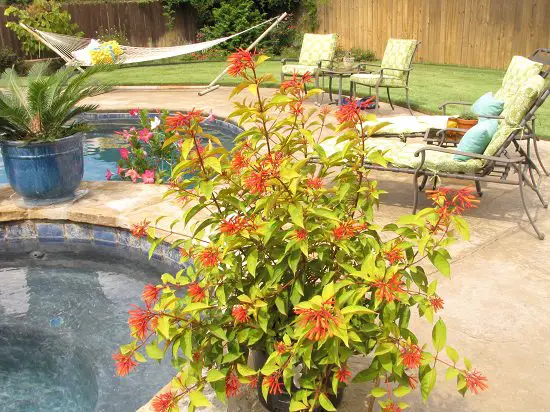
Botanical Name: Hamelia patens
USDA Zones: 8-11
Sunlight Requirement: Minimum 6-8 hours of full sunlight
A hardy perennial plant that blooms clusters of bright orange flowers from late spring to the first frost. Firebush can grow as tall as 15 feet and is heat and drought-tolerant.
Gardening Tip: Needs well-drained soil.
2. Beautyberry
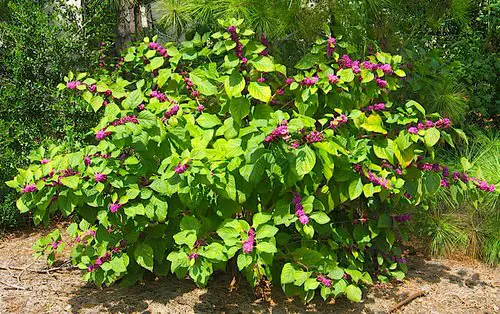
Botanical Name: Callicarpa americana
USDA Zones: 7-11
Sunlight Requirement: Full to partial sun
A native Floridian plant blooms lavender-pink flowers from spring to summer and turns vibrant purple when matured in September. Beautyberries can be 3-8 feet tall and are drought-tolerant.
Gardening Tip: Blooms best in rich soil and needs plenty of water until fully established.
3. Muhly Grass

Botanical Name: Muhlenbergia capillaris
USDA Zones: 7-11
Sunlight Requirement: Full sun
An ornamental grass that blooms fluffy pink, purple and white flower stalks from early spring to winter. Muhly grass can grow up to 2-3 feet tall.
Gardening Tip: Grows best in well-drained non-soggy soil.
4. Coral Honeysuckle
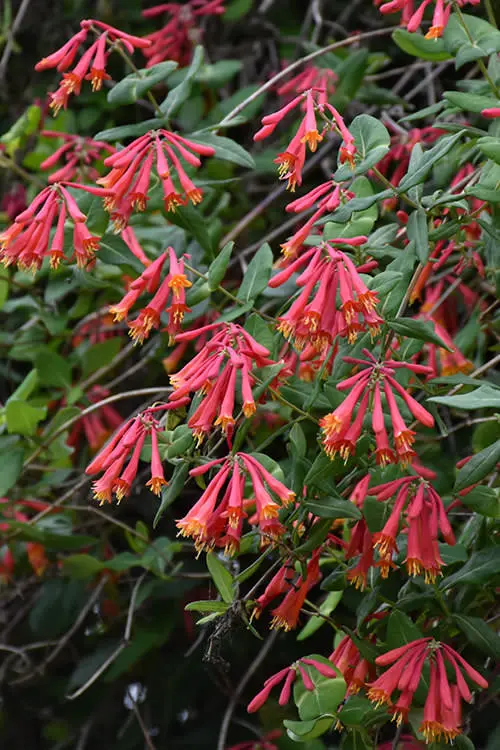
Botanical Name: Lonicera sempervirens
USDA Zones: 5-11
Sunlight Requirement: 6-8 hours of full sunlight
This beautiful native plant produces bright red tubular flowers throughout spring and summer. It can grow as tall as 15 feet and remains evergreen all year round.
Gardening Tip: Grows best in slightly acidic soil.
Types of Red Aquarium Plants, Check this out!
5. Marlberry

Botanical Name: Ardisia escallonioides
USDA Zones: 9b – 11b
Sunlight Requirement: Partial sun
Marlberry has glossy dark green leaves and grows small white flowers all year round. These plants also grow purple fruits in spring.
Gardening Tip: Grows best in sandy or loamy soil.
6. Oakleaf hydrangea
Botanical Name: Hydrangea quercifolia
USDA Zones: 5a – 9a
Sunlight Requirement: Maximum 2 hours of morning sunlight
This subtropical plant has oakleaf-shaped leaves with cone-shaped white flowers in summer.
Gardening Tip: Grows best in fertile and well-draining soil.
7. Seagrape

Botanical Name: Coccoloba uvifera
USDA Zones: 9a – 11b
Sunlight Requirement: 6-8 hours of sunlight
A drought-resistant plant with light green round-shaped leaves and red veins. This native produces small clusters of green fruit.
Gardening Tip: Needs sandy well-draining soil.
8. Southern wax myrtle
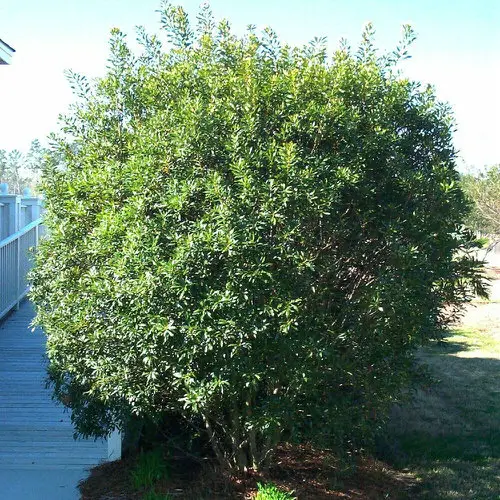
Botanical Name: Myrica cerifera
USDA Zones: 7b – 11b
Sunlight Requirement: Full to partial sun
Southern wax myrtle is an evergreen shrub that produces wax berries. It can grow as high as 15-25 feet.
Gardening Tip: Grows in almost every soil type.
9. Walter’s viburnum
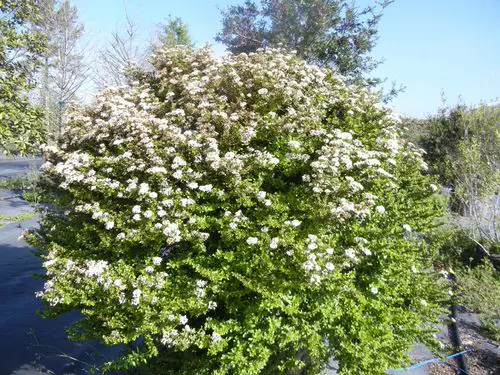
Botanical Name: Viburnum obovatum
USDA Zones: 7a – 10b
Sunlight Requirement: Full to partial sun
Evergreen shrub with glossy dark green foliage that blooms white flowers in spring.
Gardening Tip: Prefers well-drained, occasionally moist soil.
10. Wild coffee
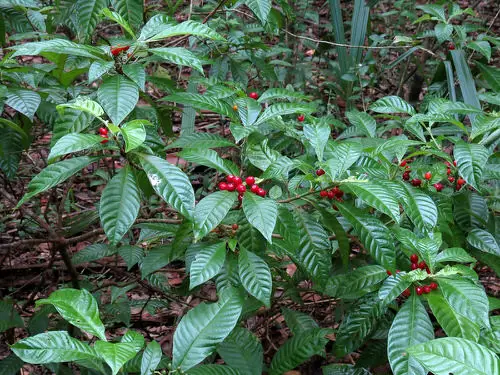
Botanical Name: Psychotria nervosa
USDA Zones: 10b – 11b
Sunlight Requirement: Partial to full shade
A member of the coffee family that produces clusters of white flowers from spring to summer then fruits in winter.
Gardening Tip: Thrives in well-drained sandy or loamy soil.
11. Star anise
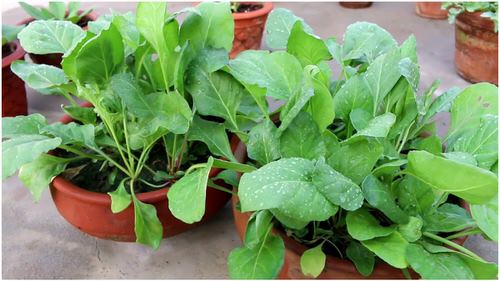
Botanical Name: Illicium verum
USDA Zones: 7a – 10b
Sunlight Requirement: Full sun to partial shade
An evergreen shrub, found in three species that blooms red, white, and yellow flowers. These shrubs are hardy that can survive most conditions.
Gardening Tip: Grows best in slightly acidic soil and need constant moisture
12. Beach sunflower

Botanical Name: Helianthus debilis
USDA Zones: 8b – 10b
Sunlight Requirement: Full to partial sun
A perfect ground cover for coastal areas that sprouts bright yellow flowers year-round. Highly salt tolerant and grows 2-10 inches long.
Gardening Tip: Grows best in sandy soil
13. Blanket flower

Botanical Name: Gaillardia
USDA Zones: 3a – 10b
Sunlight Requirement: 6-8 hours of direct sunlight
A plant native to Florida that grows in mounds and produces bright flowers in orange, yellow, red, and reddish-purple shades. This groundcover is high heat and salt tolerant.
Gardening Tip: Needs slightly acidic and well-draining soil
14. Blazing Star
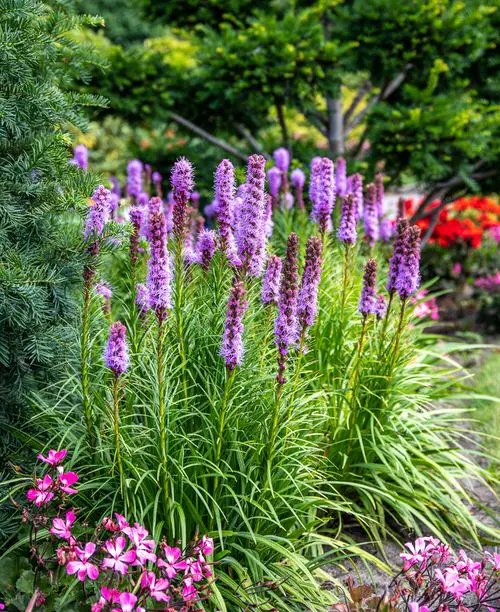
Botanical Name: Liatris
USDA Zones: 8a – 10b
Sunlight Requirement: Full sun
A perennial plant that blooms vibrant bottlebrush-shaped flowers in fall. Grows upto 5 feet tall.
Gardening Tip: Grows best in well-draining soil
15. Southern magnolia

Botanical Name: Magnolia grandiflora
USDA Zones: 6a – 10b
Sunlight Requirement: Full sun to light shade
An evergreen tree with dark green foliage that blooms large white flowers throughout spring and summer.
Gardening tip: Thrives in slightly acidic, moist, and well-draining soil
16. Saw palmetto
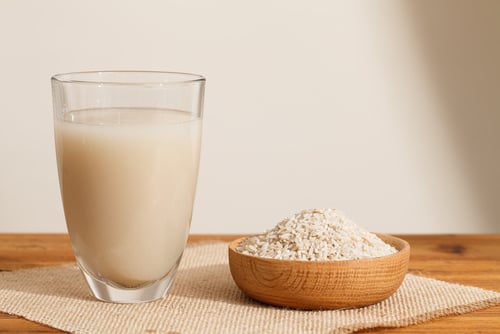
Botanical Name: Serenoa repens
USDA Zones: 8a – 11b
Sunlight Requirement: Full sun to partial shade
A clumping palm with fan-shaped leaves. Salt tolerant and grows upto 10 feet tall.
Gardening Tip: Grows best in fully dry soil
17. Southern live oak
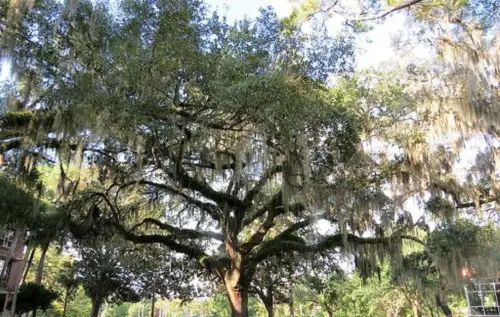
Botanical Name: Quercus virginiana
USDA Zones: 8a – 10b
Sunlight Requirement: 4 hours of direct unfiltered sun
An evergreen native to the open grounds of Florida whose branches spread upto 100 feet wide and survive for centuries.
Gardening Tip: Prefers acidic loamy soil
18. Red buckeye
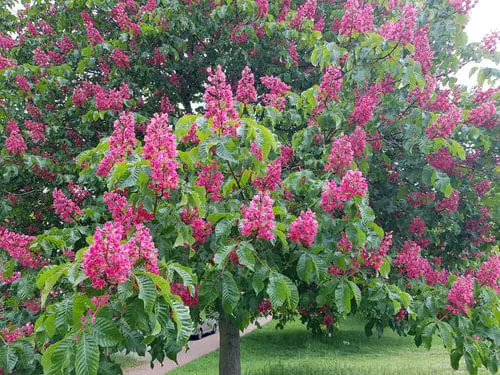
Botanical Name: Aesculus pavia
USDA Zones: 4a – 8b
Sunlight Requirement: Full to partial sun
A small deciduous tree that blooms clustered tubular flowers in spring. Grows upto 20 feet tall and has poisonous seed pods.
Gardening Tip: Grows best well-drained soil
19. Pond cypress
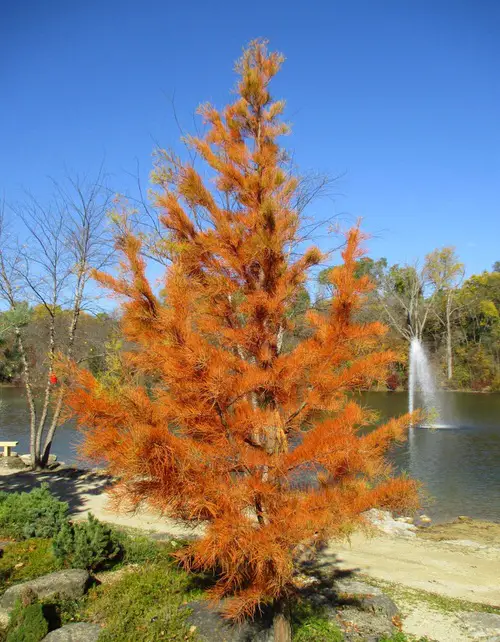
Botanical Name: Taxodium ascendens
USDA Zones: 5b – 9b
Sunlight Requirement: Full sun to partial shade
A drought-tolerant deciduous tree that survives well in moist and swampy areas.
Gardening Tip: Prefers moist well-draining soil
20. Sabal palm
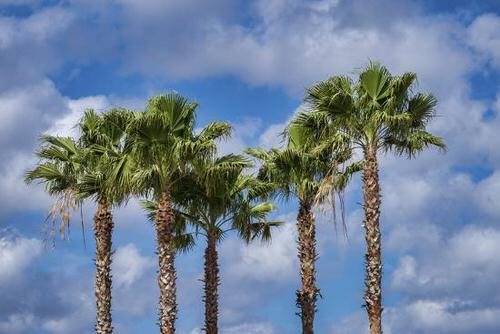
Botanical Name: Sabal palmetto
USDA Zones: 8a – 11b
Sunlight Requirement: Full sun
An evergreen palm tree that is native to Florida with cabbage-like leaves, also known as Florida’s state tree. Grows upto 50 feet tall.
Gardening Tip: Grows best in well-draining loamy or sandy soil
Read about the Best Palm Tree Tattoo Ideas here.
21. Gumbo Limbo tree

Botanical Name: Bursera simaruba
USDA Zones: 10b – 11b
Sunlight Requirement: Full sun to partial shade
A deciduous native tree with an interesting copper-colored peeling bark, also known as the tourist’s tree.
Gardening Tip: Prefers well-draining loamy or sandy soil
22. Florida Maple

Botanical Name: Acer barbatum
USDA Zones: 6b – 9a
Sunlight Requirement: Full to partial sun
A heat-tolerant tree, native to Florida, whose leaves turn beautiful orange and yellow in fall.
Gardening Tip: Grows best in clayey and loamy soil
23. Eastern redbud

Botanical Name: Cercis canadensis
USDA Zones: 4b – 9a
Sunlight Requirement: Blooms in full sun
A deciduous species that bloom bright pink flowers in late winter and grows upto 20-30 feet.
Gardening Tip: Prefers moist well-drained soil
24. Chickasaw plum
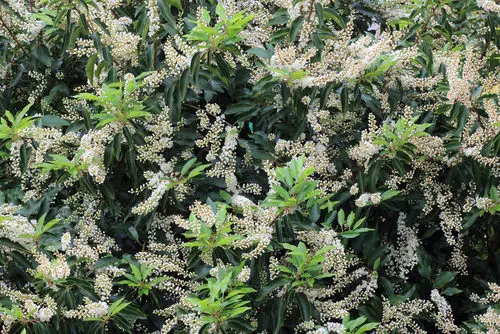
Botanical Name: Prunus angustifolia
USDA Zones: 5a – 9b
Sunlight Requirement: Full sun to partial shade
Often used as a specimen tree, the Chickasaw plum tree blooms small white flowers in spring.
Gardening Tip: Prefers well-draining sandy soil
25. Yucca

Botanical Name: Yucca
USDA Zones: 5a – 10b
Sunlight Requirement: 3-6 hours of filtered bright light
An evergreen plant with blade-like leaves which blooms clusters of white flowers in mid-summer or early fall. Yucca has three species, native to Florida — Spanish bayonet (Yucca aloifolia), Adam’s needle (Y. filimentosa), and mound Spanish dagger (Y. gloriosa).
Gardening Tip: Grows best in well-draining, non-soggy soil
26. Southern shield fern
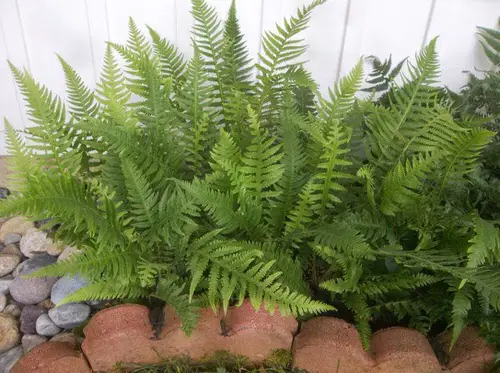
Botanical Name: Thelypteris kunthii
USDA Zones: 7a – 10b
Sunlight Requirement: Full sun to partial shade
A green groundcover with triangular light green fronds that grow in spring and turn bronze by fall. Deer-resistant and grows upto 4 feet tall.
Gardening Tip: Loves moist, well-draining soil
27. Jamaica caper
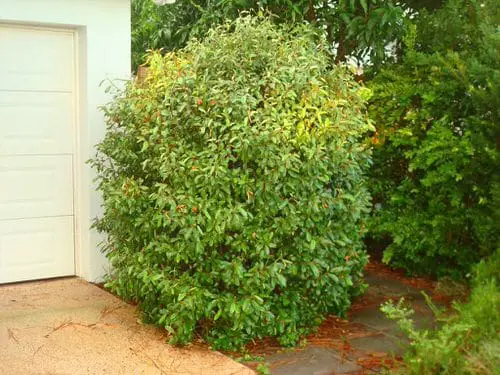
Botanical Name: Capparis cynophallophora
USDA Zones: 10a – 11b
Sunlight Requirement: Full sun to partial shade
A native Floridian plant with light green, glossy, oval-shaped leaves and produces purple flowers with long showy stamens. Grows to a height of 18 feet.
Gardening Tip: Grows best in well-draining loamy or sandy soil and lime rock
28. Fakahatchee grass
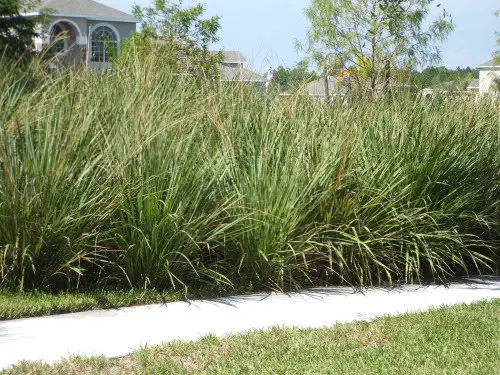
Botanical Name: Tripsacum dactyloides
USDA Zones: 8a – 11b
Sunlight Requirement: Full sun to partial shade
A perennial grass-like native that grows in a shrub-sized clump. Can resist flood and drought, is nonresistant to long-frozen periods, and grows 4-6 feet long.
Gardening Tip: Needs well-drained to moderately drained soil
29. Coontie

Botanical Name: Zamia integrifolia
USDA Zones: 8a – 11b
Sunlight Requirement: Full to partial sun
A shrub-sized evergreen, native to North Florida with feathery leaves. Cold and salt tolerant and grows upto 3 feet.
Gardening Tip: Grows best in well-draining sandy moist soil
30. Button Sage
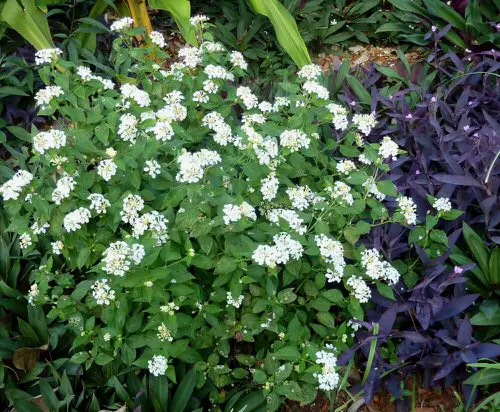
Botanical Name: Lantana involucrata
USDA Zones: 8b – 11b
Sunlight Requirement: 8-9 hours of full sun
A hurricane-resistant shrub with tiny green leaves that blooms small white flowers and purple fruits year-round. A ground cover that grows upto 5 feet.
Gardening Tip: Prefers dry sandy soil
31. Black-Eyed Susan
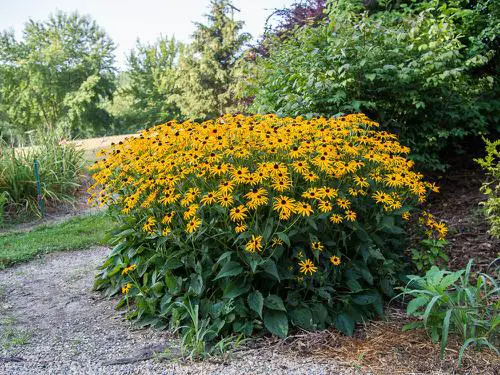
Botanical Name: Rudbeckia hirta
USDA Zones: 3a – 9b
Sunlight Requirement: 2-6 hours of direct sunlight
A Floridian native that blooms vibrant yellow, orange, or red petals in the sweltering heat of Florida. Salt and drought tolerant, grows upto 3 feet.
Gardening Tip: Prefers moist to dry well-drained soil
32. Columbine

Botanical Name: Aquilegia canadensis
USDA Zones: 3a – 8b
Sunlight Requirement: Full sun
A wildflower with red and yellow blossoms. Can grow from 6 inches to 4 feet.
Gardening Tip: Prefers sandy well-drained soil
33. Coral bean
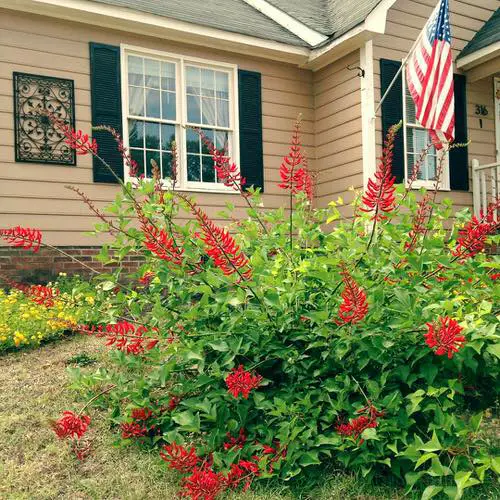
Botanical Name: Erythrina herbacea
USDA Zones: 8a – 11b
Sunlight Requirement: Full sun to partial shade
An ornamental tree that can be pruned into desired shape and size and blooms bright red tubular flowers.
Gardening Tip: Prefers sandy well-drained soil
34. Elliott’s aster

Botanical Name: Symphyotrichum elliottii
USDA Zones: 8a – 11b
Sunlight Requirement: Full sun
A perennial plant that blooms small lavender flowers with yellow centers in winter. This native plant grows upto 5 feet tall.
Gardening Tip: Loves moist soil type
35. White Wild Indigo
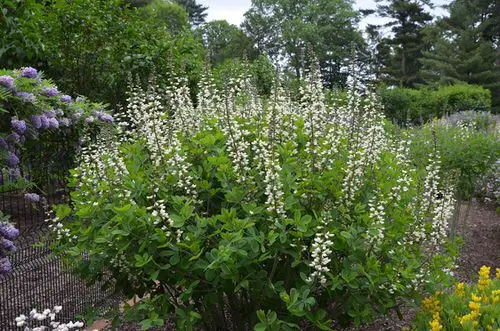
Botanical Name: Baptisia alba
USDA Zones: 8a-9a
Sunlight Requirement: Full sun to partial shade
A native to Florida that produces nearly 18 cm large pea-shaped white flowers. With low tolerance to the salty wind, this plant can grow upto 2.5 feet tall.
Gardening Tip: Prefers acidic clayey, loamy, or sandy soil
36. Passion Flower
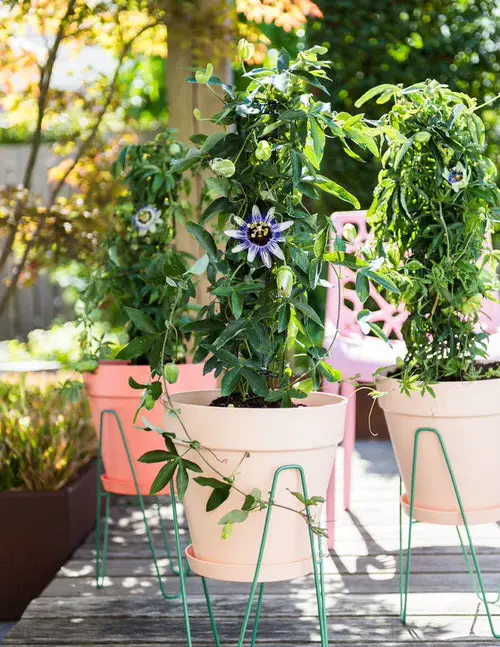
Botanical Name: Passiflora
USDA Zones: 6a – 10b
Sunlight Requirement: 4-6 hours of full sun
A Perennial vine that blooms showy flowers with pretty fringe coming out from lavender petals and an interesting pattern at the center. Climbs upto 30 feet in height.
Gardening Tip: Prefers moist well-drained soil
37. Powderpuff mimosa
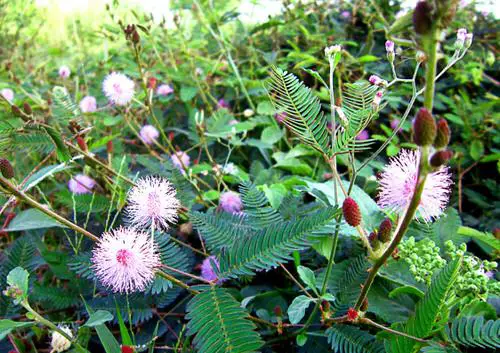
Botanical Name: Mimosa strigillosa
USDA Zones: 8a – 10b
Sunlight Requirement: Full sun
A perennial ground cover with puff-shaped soft pink flowers that bloom from spring to fall. Spreads easily and grows 3-4 inches high.
Gardening Tip: Prefers moist well-drained soil
38. Railroad vine
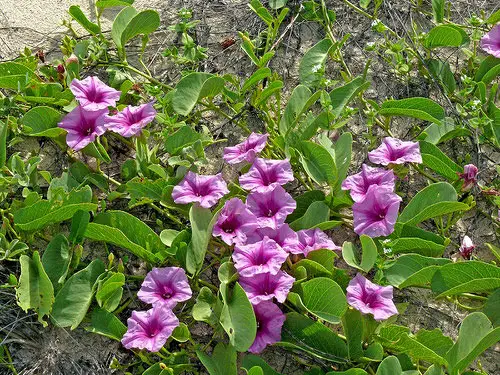
Botanical Name: Ipomoea pes-caprae
USDA Zones: 9a – 11b
Sunlight Requirement: Full sun
A perennial vine that blooms pink or white trumpet-shaped flowers all year round. Railroad vine is salt spray resistant and can grow 4-6 inches tall.
Gardening Tip: Grows best in sandy soil
39. Scarlet sage
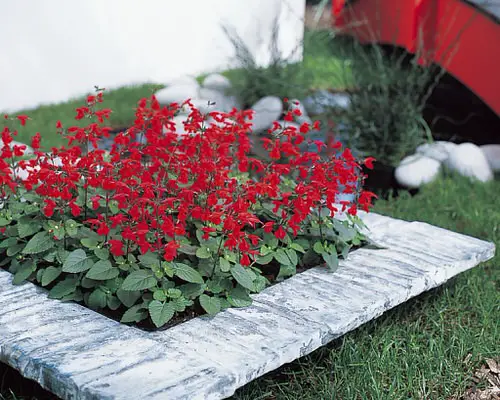
Botanical Name: Salvia coccinea
USDA Zones: 7a – 11b
Sunlight Requirement: 6-8 hours of full sun
A perennial with bright red tubular flowers from spring to fall. This native Floridian plant grows upto 4 feet tall.
Gardening Tip: Prefers well-drained slightly alkaline soil
40. Swamp mallow
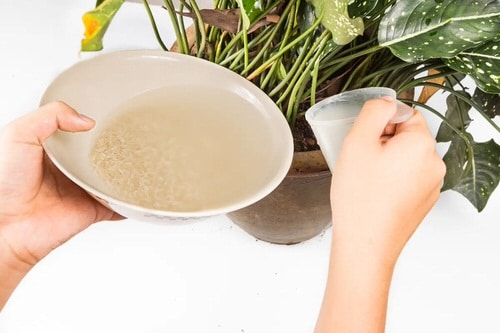
Botanical Name: Hibiscus coccineus
USDA Zones: 8a – 10b
Sunlight Requirement: 6-8 hours of full sun
A species of hibiscus that blooms bright red flowers in mid to late summer. Grows 4-8 feet tall.
Gardening Tip: Prefers moist well-drained sandy loamy soil
41. Tickseed
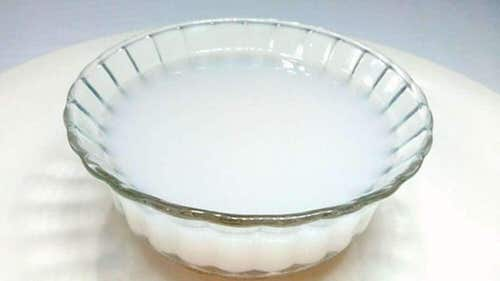
Botanical Name: Coreopsis
USDA Zones: 4a – 10b
Sunlight Requirement: 6-8 hours of full sun
A short flowery plant, native to Florida that blooms vibrant yellow flowers in spring and summer. Height varies typically from 1-4 feet.
Gardening Tip: Prefers slightly moist well-drained soil
42. Violets
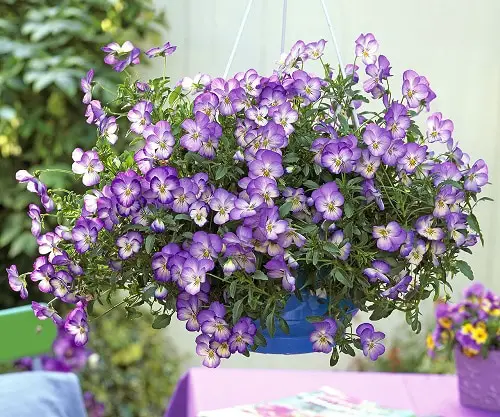
Botanical Name: Viola
USDA Zones: 8a – 10a
Sunlight Requirement: 6-8 hours of full sun
A native Floridian plant that blooms in blue and white violet shades. Grows upto 12 inches in height.
Gardening Tip: Prefers humusy moist soil
43. Azaleas
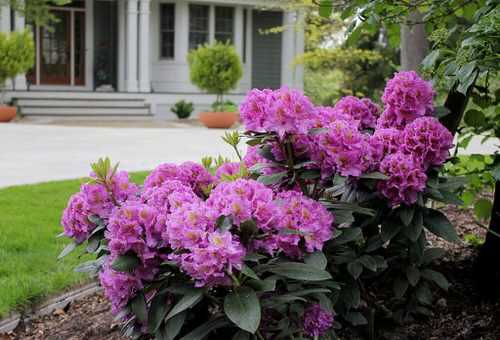
Botanical Name: Rhododendron
USDA Zones: 5a – 9b
Sunlight Requirement: 7 hours of full sun
An evergreen shrub that is covered with spring blossoms of bright pink, red, and white. Grows typically upto 3-5 feet.
Gardening Tip: Blooms best in acidic well-draining soil
Click here to read about the best type of Violet Flowers.
44. Bahama cassia
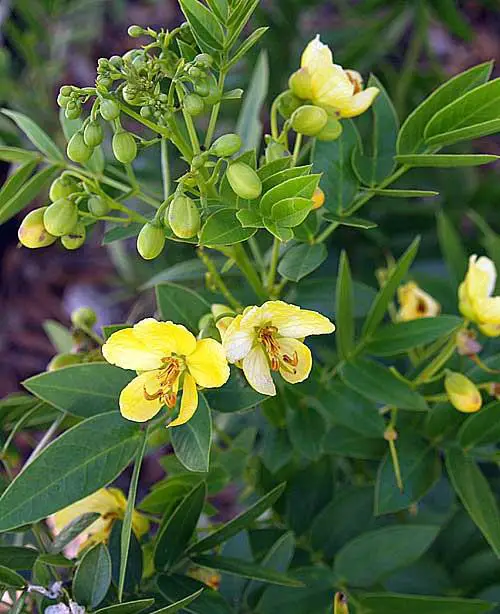
Botanical Name: Cassia bahamensis
USDA Zones: 10b – 11b
Sunlight Requirement: Full sun to partial shade
A short-lived upright shrub that blooms little yellow flowers in fall. Bahama Cassia grows upto 9 feet in height.
Gardening Tip: Prefers well-drained acidic sandy soil
45. Buttonwood
Botanical Name: Conocarpus erectus

USDA Zones: 10b – 11b
Sunlight Requirement: Full sun
A dense multi-trunked tree that bears red to brown clustered button like fruits. Generally rises upto 40 feet tall.
Gardening Tip: Prefers moist to well-draining soil
46. White Fringe Tree

Botanical Name: Chionanthus virginicus
USDA Zones: 4-9
Sunlight Requirement: Full sun to partial shade
A long-lived perennial tree that blooms white flowers in late spring. White Fringe Tree is drought tolerant and can grow upto 20 feet tall.
Gardening Tip: Grows best in moist well-drained fertile soil
47. Butterflyweed
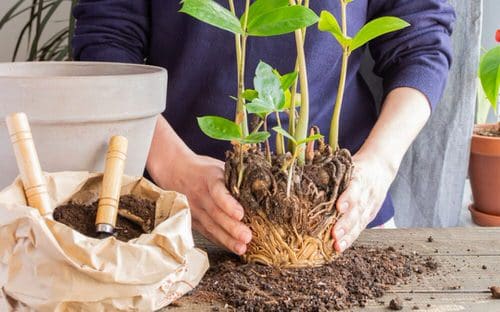
Botanical Name: Asclepias tuberosa
USDA Zones: 4-10
Sunlight Requirement: 8-9 hours of full sun
A short-lived perennial that blooms bright orange flowers. Butterflyweed is drought resistant and blooms 2-3 years after being planted.
Gardening Tip: Loves well-drained dry loamy or sandy soil
48. Yellow Jesamine

Botanical Name: Gelsemium sempervirens
USDA Zones: 7-10
Sunlight Requirement: Full sun to partial shade
A long-lived perennial vine that produces showy yellow flowers and interesting foliage. Yellow Jesamine has little tolerance to salty wind but is intolerant to salt spray.
Gardening Tip: Loves acidic loamy and sandy soil
49. Clusia
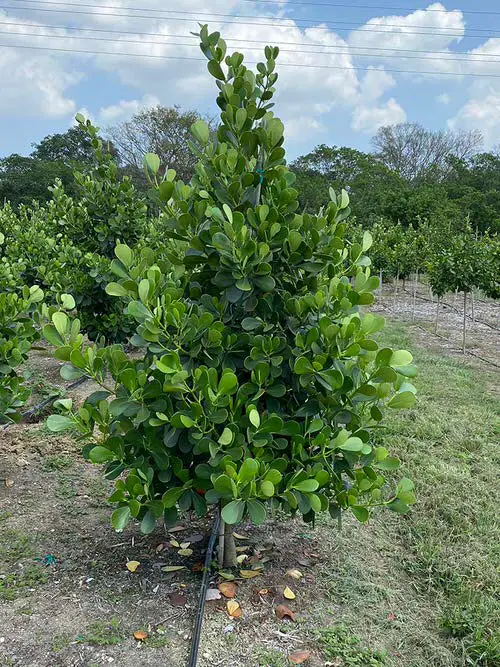
Botanical Name: Clusia
USDA Zones: 10
Sunlight Requirement: 5-6 hours of full sun
A low-maintenance plant that branches out close to the ground with thick-leathery drop-shaped leaves. Clusia is a salt-tolerant plant and generally grows upto 10 feet tall.
Gardening Tip: Needs well-draining soil to grow
50. Eugenia

Botanical Name: Eugenia
USDA Zones: 10-11
Sunlight Requirement: 6 hours of full sun
A fast-growing dense and hardy plant that blooms creamy white flowers in spring followed by red berry-like fruits. Eugenia is a fast grower, which can grow 15 feet tall if not trimmed.
Gardening Tip: Prefers well-drained sandy soil
51. Blue Mistflower
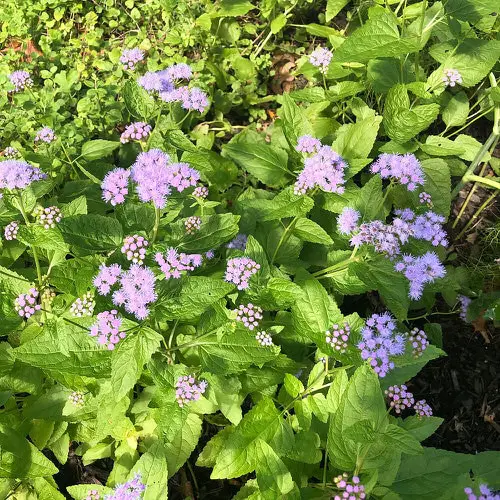
Botanical Name: Conoclinium coelestinum
USDA Zones: 5-10
Sunlight Requirement: Full sun to partial shade
This perennial wildflower plant blooms clusters of bright blue, violet, or white flower heads from late summer to fall. Blue mistflower spreads extensively and grows upto 2-3 feet tall.
Gardening Tip: Prefers moist fertile humusy soil
52. Holly Trees

Botanical Name: Ilex spp.
USDA Zones: 5-9
Sunlight Requirement: Full sun to partial shade
This native Florida tree shows glossy green leaves with clustered red or orange berries in the fall. Holly Trees are heat resistant and can grow upto 50 feet.
Gardening Tip: Loves slightly acidic clayey soil
53. Southern Red Cedar Tree
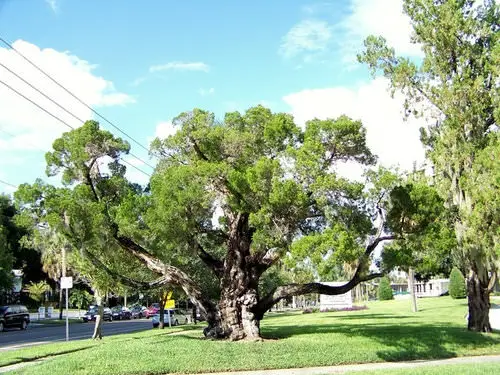
Botanical Name: Juniperus silicicola
USDA Zones: 7-10
Sunlight Requirement: Full sun to partial shade
This evergreen tree, native to South Florida covered with beautiful emerald-green, soft, fine foliage is salt and drought tolerant. Grows upto 40 feet in height.
Gardening Tip: Prefers dry sandy and rocky soil
54. Slash Pine Tree
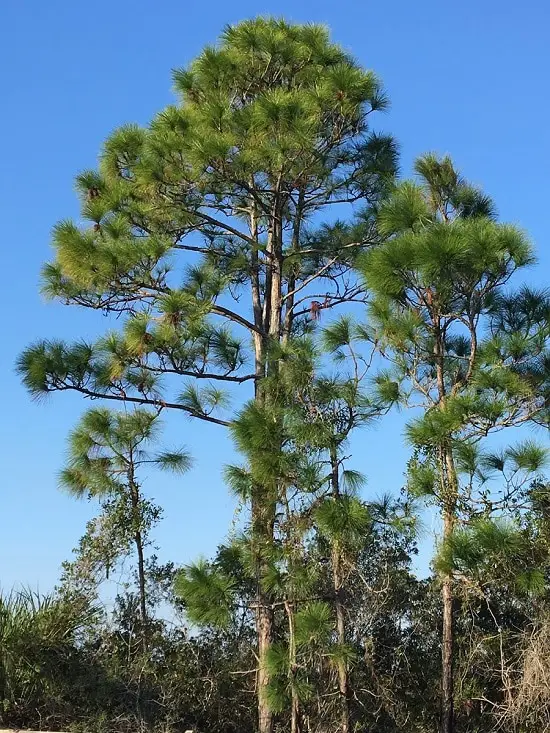
Botanical Name: Pinus elliottii
USDA Zones: 9-11
Sunlight Requirement: 6-8 hours of unfiltered light
This native conifer tree provides a canopy of soft needle-like leaves and is home to a number of birds. Slash Pines reaches upto 60-80 feet.
Gardening Tip: Grows in well-drained sandy soil
55. Wild Tamarind
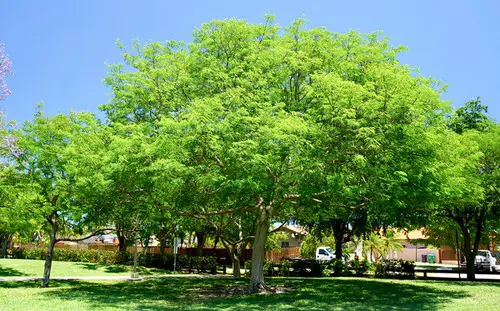
Botanical Name: Lysiloma latisiliquum
USDA Zones: 10a – 11
Sunlight Requirement: 6-8 hours of full sun
Native to South Florida, this semi-deciduous tree shows green feathery leaves on branches sprouted in all directions forming a crown on top. Grows to a height of 60 feet.
Gardening Tip: Prefers loamy and sandy soil.
56. Joewood
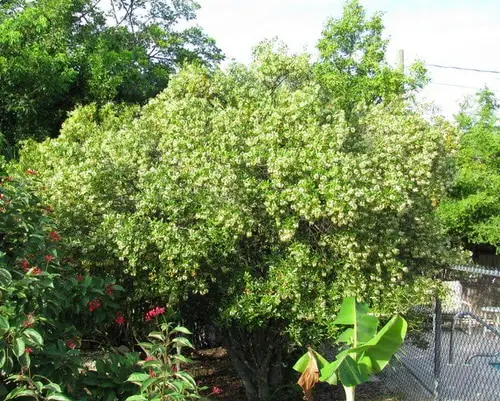
Botanical Name: Jacquinia keyensis
USDA Zones: 10a-12b
Sunlight Requirement: Full sun to light shade
Small flowering tree with small white ivory funnel-shaped flowers with 5 widely spread petals. With high drought, salt, and wind tolerance, this Floridian native can grow upto 10 feet tall.
Gardening Tip: Grows in well-drained acidic or alkaline clayey, sandy and loamy soil
57. Golden Creeper
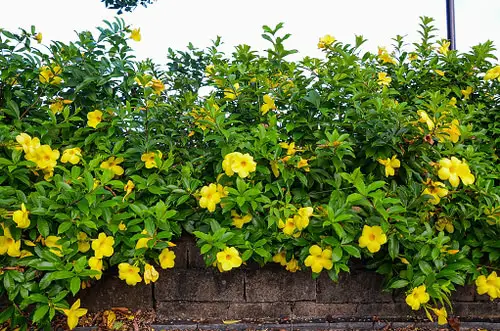
Botanical Name: Allamanda cathartica
USDA Zones: 10-11
Sunlight Requirement: 8-9 hours of full sun
A strong tropical vine that blooms bright yellow trumpet-shaped flowers that spread from 3-12 feet.
Gardening Tip: Prefers moist but well-drained clayey, loamy and sandy soil.
58. White Indigo Berry
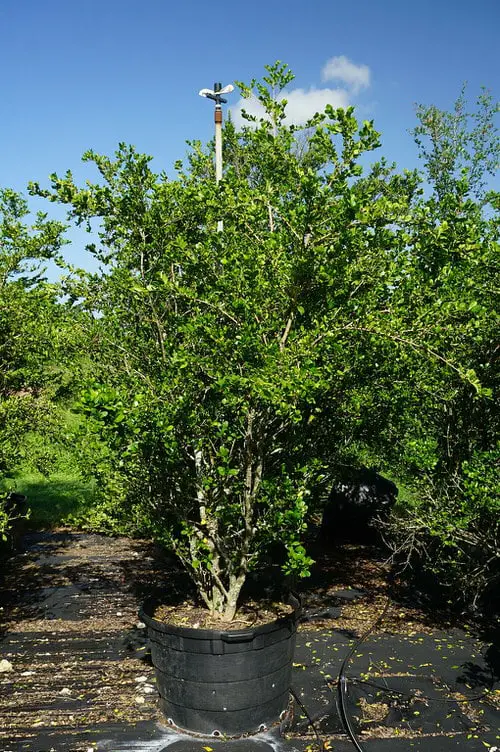
Botanical Name: Randia aculeata
USDA Zones: 9a-11
Sunlight Requirement: Full sun to partial shade
A native Florida shrub with small, spiny, leathery leaves clustered towards the tip of the branches that can grow upto 20 feet tall.
Gardening Tip: Loves well-drained sandy or rocky soil
59. Red Bay

Botanical Name: Persea borbonia
USDA Zones: 7-11
Sunlight Requirement: Full sun to partial shade
An evergreen tree that produces dark blue spherical fruit. Red bay can grow from 30-70 feet tall.
Gardening Tip: Loves light sandy to medium loamy soil
60. Wild Lime

Botanical Name: Zanthoxylum fagara
USDA Zones: 9b-11
Sunlight Requirement: Full sun to partial shade
A woody, evergreen, multi-stemmed tree with compound leaves, sharp thorns that blooms clusters of small, yellow-green flowers. Drought-tolerant and grows upto 25 feet tall.
Gardening Tip: Loves acidic or alkaline, sand, loam, and clayey soil
61. Gopher Apple

Botanical Name: Licania michauxii
USDA Zones: 8a-11
Sunlight Requirement: Full sun to partial shade
A hardy groundcover with small white creamy flowers on green leathery stems. Drought and salty wind tolerant, grows upto 5 feet tall.
Gardening Tip: Thrives in moist to dry well-drained sandy or limestone humus-free soil
62. Dotted Horsemint
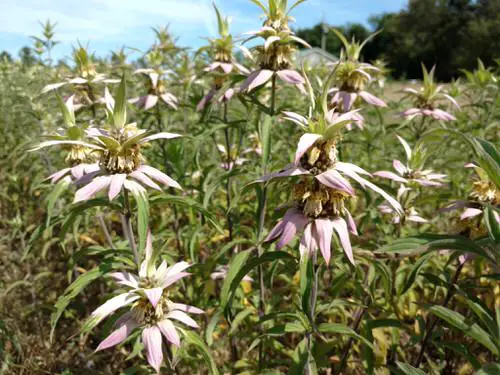
Botanical Name: Monarda punctata
USDA Zones: 4-9
Sunlight Requirement: Full sun
A herbaceous perennial with spikes of densely clustered small flowers above light pink-purple tinged bracts that bloom late spring through fall. Drought-tolerant and grows to a height of 4 feet.
Gardening Tip: Loves dry sandy, loamy soil


